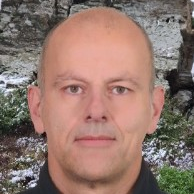Soil Conservation Service Curve Number (SCS-CN) Method Current Applications, Remaining Challenges, and Future Perspectives
A special issue of Water (ISSN 2073-4441). This special issue belongs to the section "Hydrology".
Deadline for manuscript submissions: closed (30 September 2020) | Viewed by 42958
Special Issue Editor
Interests: hydrology; environmental hydrology; hydrological modeling; hydrometry; WRM; irrigation; irrigation water management; soil hydrology; geographical information systems (GIS)
Special Issues, Collections and Topics in MDPI journals
Special Issue Information
Dear Colleagues,
Predicting runoff in ungauged or poorly gauged watersheds is one of the key problems in applied hydrology. Thus, simple methods for runoff estimation are particularly important in hydrologic applications, such as flood design or water balance calculation models. Probably, the most well-documented and, at the same time, simple conceptual method for predicting runoff is the Soil Conservation Service curve number (SCS-CN) method. This method was originally developed by the U.S. Department of Agriculture, Soil Conservation Service to predict direct runoff volumes for given rainfall events and mainly for the evaluation of storm runoff in small agricultural watersheds. It was first published in 1956 in the National Engineering Handbook Section 4—Hydrology. Due to its simplicity and its extensive documentation, it soon became one of the most popular techniques among engineers and practitioners and is widely used in many hydrological applications. The main reasons are that it is a very simple but well-established method, it features easy to obtain and well-documented environmental inputs, and it accounts for many of the factors affecting runoff generation, incorporating them in a single CN parameter. The SCS-CN method has been adopted for various regions and for various land uses and climatic conditions. Furthermore, beyond its original scope for the evaluation of storm runoff, it has become an integral part of more complex, long-term watershed models. Nevertheless, the method is receiving ever-increasing attention in the hydrologic literature, with many contributions that enhance the current understanding and widen even further its range of applicability.
However, after many years of constant development and research, critical issues are still remaining, such as the following:
- Improving the SCS-CN method runoff predictions and at the same time preserving its current level of simplicity;
- Moving towards a unique generally accepted procedure for CN determination from rainfall runoff data and consideration of spatial variability in CN estimation;
- Investigation of the gains and the implications of altered initial abstraction ratios;
- Investigation of the scale dependency of CN values (Are CNs obtained at different scales (plot scale, catchment scale, etc.) compatible?);
- Investigating the implications of using SCS-CN in continuous hydrological models. Implementation of various soil moisture accounting systems and CN;
- Extending and adopting the existing CN documentation in a broader range of regions, land uses, and climatic conditions;
- Utilizing novel modeling, geoinformation systems, and remote sensing techniques to improve the method’s performance and efficiency.
Accordingly, the aim of this Special Issue is to present the latest developments in SCS-CN methodology, including, but not limited to, novel applications, theoretical and conceptual studies broadening the current understanding, studies extending the method’s application in other geographical regions or other scientific fields, substantial evaluation studies, and ultimately key advancements towards addressing the remaining challenges.
Dr. Konstantinos Soulis
Guest Editor
Manuscript Submission Information
Manuscripts should be submitted online at www.mdpi.com by registering and logging in to this website. Once you are registered, click here to go to the submission form. Manuscripts can be submitted until the deadline. All submissions that pass pre-check are peer-reviewed. Accepted papers will be published continuously in the journal (as soon as accepted) and will be listed together on the special issue website. Research articles, review articles as well as short communications are invited. For planned papers, a title and short abstract (about 100 words) can be sent to the Editorial Office for announcement on this website.
Submitted manuscripts should not have been published previously, nor be under consideration for publication elsewhere (except conference proceedings papers). All manuscripts are thoroughly refereed through a single-blind peer-review process. A guide for authors and other relevant information for submission of manuscripts is available on the Instructions for Authors page. Water is an international peer-reviewed open access semimonthly journal published by MDPI.
Please visit the Instructions for Authors page before submitting a manuscript. The Article Processing Charge (APC) for publication in this open access journal is 2600 CHF (Swiss Francs). Submitted papers should be well formatted and use good English. Authors may use MDPI's English editing service prior to publication or during author revisions.
Keywords
- Soil Conservation Service curve number (SCS-CN) method
- Natural Resources Conservation Service curve number (NRCS-CN) method
- Rainfall–runoff modeling
- Hydrological modeling
- Hydrological response
- Direct runoff
- CN determination.






